Larry Ossei-Mensah didn’t grow up a child surrounded by art. As a New Yorker from the Bronx, it was only after a year of graduate school in Switzerland that he really caught the bug. Many years later he tells Collecteurs how his background outside of the art world actually inspired him to remove the stigma surrounding contemporary art and make it his priority to ensure that art is for everyone and it is seen by as many people as possible.
**
Collecteurs: In what ways has your upbringing in the Bronx shaped you?
**
When I think about some of the principles that guide my curatorial practice, access has always been number one. I always think about how to bring in an audience that wouldn’t necessarily attend contemporary exhibitions.
I didn’t grow up going to shows, so I think a lot about my 16-year old self. How can I create things for others so they too can experience the power of art and culture in their lives. Art has helped me to understand the world around me, so I want to pass that on to those who see my exhibitions.
Growing up in an urban environment, you become hyper-aware of the things you take for granted, and the things you never knew were available for you. I want to create a sense that art is for everyone, not just a specific audience.
**How did you first get in touch with art?
**
I’m a New York kid from the Bronx, and I grew up in the 80s and 90s, so graffiti culture was a big thing during my youth.
During high school, I took an art class, but it wasn’t really until graduate school—when I lived in Switzerland for a year—that I caught the bug. I was spending weekends in Paris, Madrid, Barcelona, London, and as a student one of the few activities within my budget was going to museums. I would look up when the museums were free and plan my trips around that. So eventually I began to have questions.
When I moved back from Switzerland and started going to art shows, doing exhibitions and writing about art, I realized I could be of service if I put together shows that focused on emerging, marginalized artists. I wanted to figure out how to create a platform for them. Normally they would have to go through a chain of command to have their work seen, and now that has changed with the influence of social media.

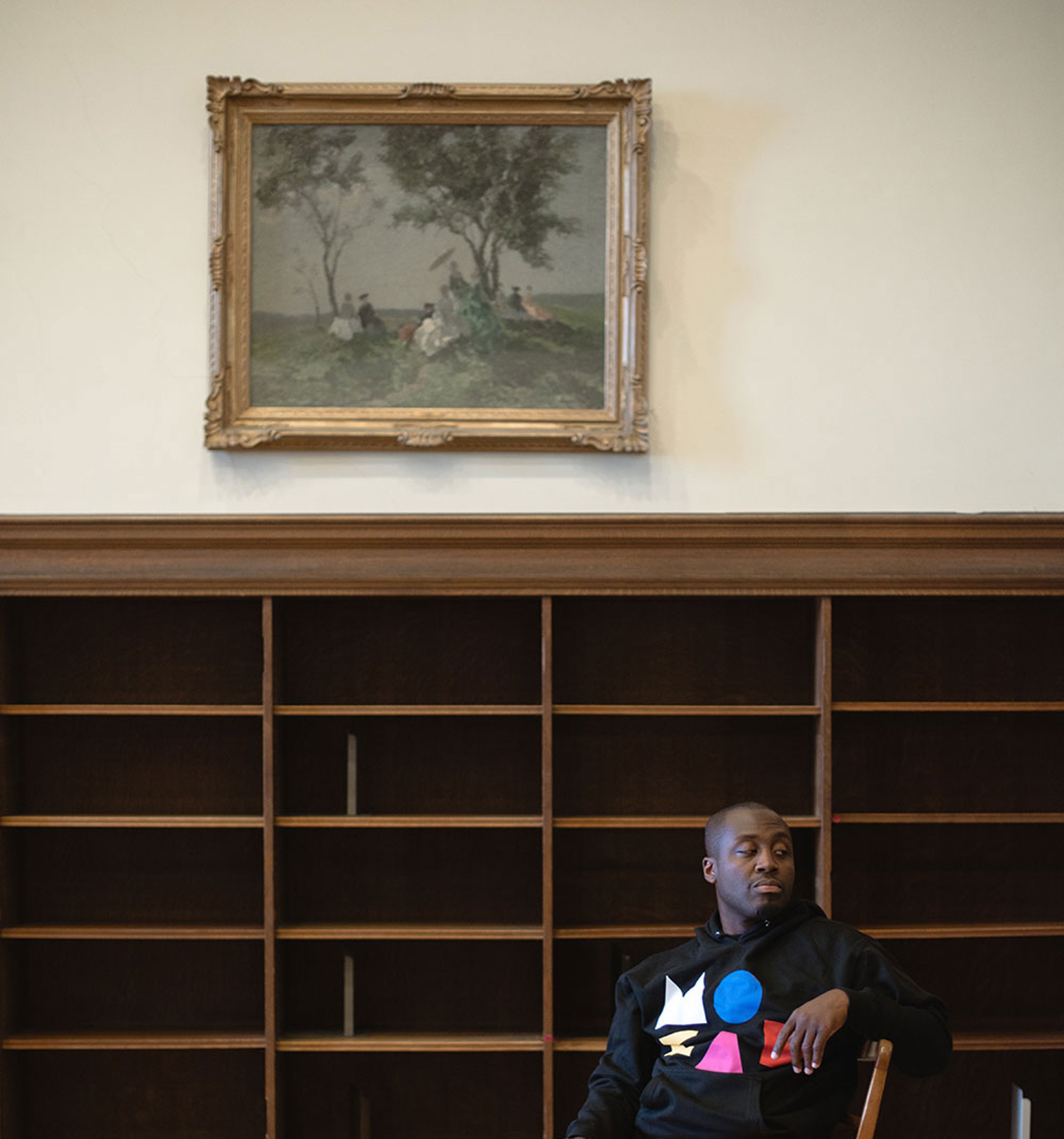
Because of visibility?
Yes, access and connectivity with artists. I can begin a dialogue with someone without needing to go see them in Shanghai. And if I do end up going there, I can arrange a physical studio visit. So the way we touch and engage with artists has evolved rapidly.
Though I am still a believer in doing proper studio visits, I like that I can DM an artist to a friend or colleague, and tell them to check out the work. It’s no longer just about putting together shows, but how can I be of service.
And that’s to connect people.
That’s the bread and butter for me. I try to help people do the things they want to do or didn’t believe was doable.
So working as a curator, it is most important to create access and connect people?
That, and a sense of belonging. I like educating friends who are young collectors, exposing them and doing studio visits with them. I periodically give impromptu tours of exhibitions just for fun and to help educate my peers who may not be steeped in the visual arts. Through my collective, ARTNOIR, we do a lot of activities with folks in our circle of influence. For example, back in October, we did studio tours with Bronx-based artists in partnership with Latchkey Gallery, Art in America and Art Money as a way to expose collectors to emerging artists.
So it’s a lot about removing the stigma around contemporary art, and getting rid of the idea that you need to be a millionaire in order collect art or to be part of this ecosystem.
That’s one of the problems, people assuming they can’t take part in it.
Yes—there’s art speak, which is designed at times to make things seem inaccessible. But with the proliferation of social media, walls are beginning to come down. I am a believer that once you have exposed a person to the magic of the arts, there is a high likelihood that they will catch the bug. Now in 2019 you have the beauty of the internet, social media, and books to educate yourself.
Like in your case, not coming from a traditional art context but a business and marketing background.
Right, so when you asked me earlier about my upbringing, I do think my education has given me a unique point of view. I think about these projects through the lens of a marketer. It’s not just about the exhibition concept or the artists, but what the message is and the story being told through the exhibition format. How do we promote it, using all these different tools like social media, or even a leveraging a platform like Spotify and their playlists as access points into a broader discourse—with the aim of really introducing as many touch points to the conversation as possible.
So even if you don’t like what you’re looking at, if something I said resonates with you, you can begin to search for answers on your own. It’s about being a catalyst for diversity. Not just in the racial sense—but culturally, ethically, economically and psychologically. And it’s not just about connecting, but also sharing.
Collaboration is also a big thing. If you look at the shows I’ve organized, a number of them have been co-curated. Like with Dexter Wimberly, we collaborated on three shows, and the current one on view at the Museum of the African Diaspora (MOAD) in San Francisco entitled Coffee, Rhum, Sugar & Gold: A Postcolonial Paradox. The show takes a contemporary look at colonialism through the lens of the Caribbean. We recently received $50,000 dollar Warhol grant for that exhibition, which is great and will really enable us to extend the reach of the show. We are now thinking about touring the show. And again, all of it through the lens of a marketer: how can we reach as many people as possible.
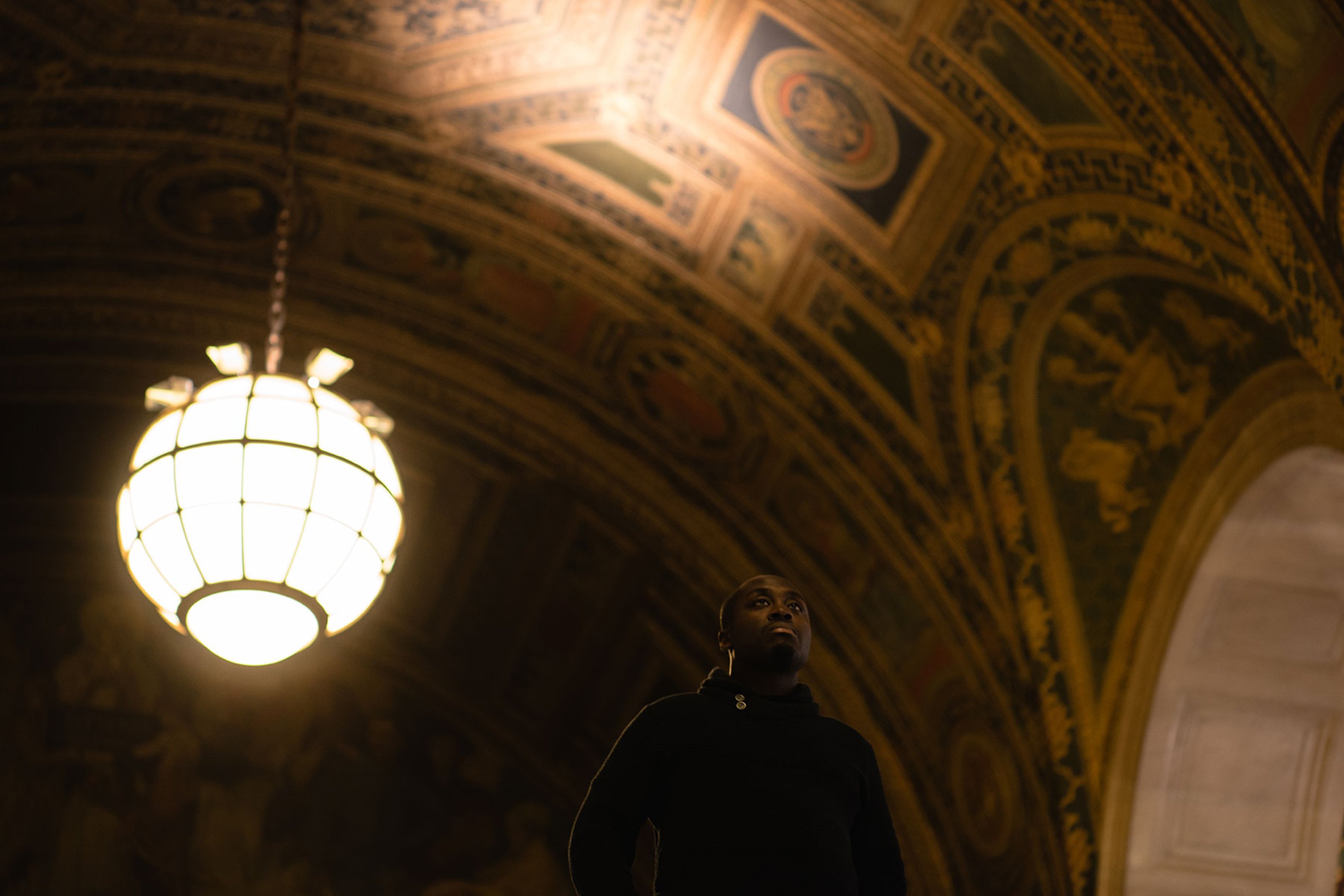
Young people especially?
Young, and old actually. In the past year, I’ve been thinking a lot about older artists who have been working for a long time who never really got their moment and are true masters at what they do.
Can you name an example?
I worked with artist Stanley Whitney on a project titled No to Prison Life. It was the first time we did a project together, so it was exciting. I really wanted to collaborate with Stanley in a way that was meaningful and this project was almost a year in the making.
I also had the pleasure of giving Hugo McCloud, an artist I’ve worked with since around 2011, his first show in Chelsea. It’s fun to see where his career has gone and how the work has evolved over these past years.
I enjoy carving out a space, working with the diamonds in the rough.
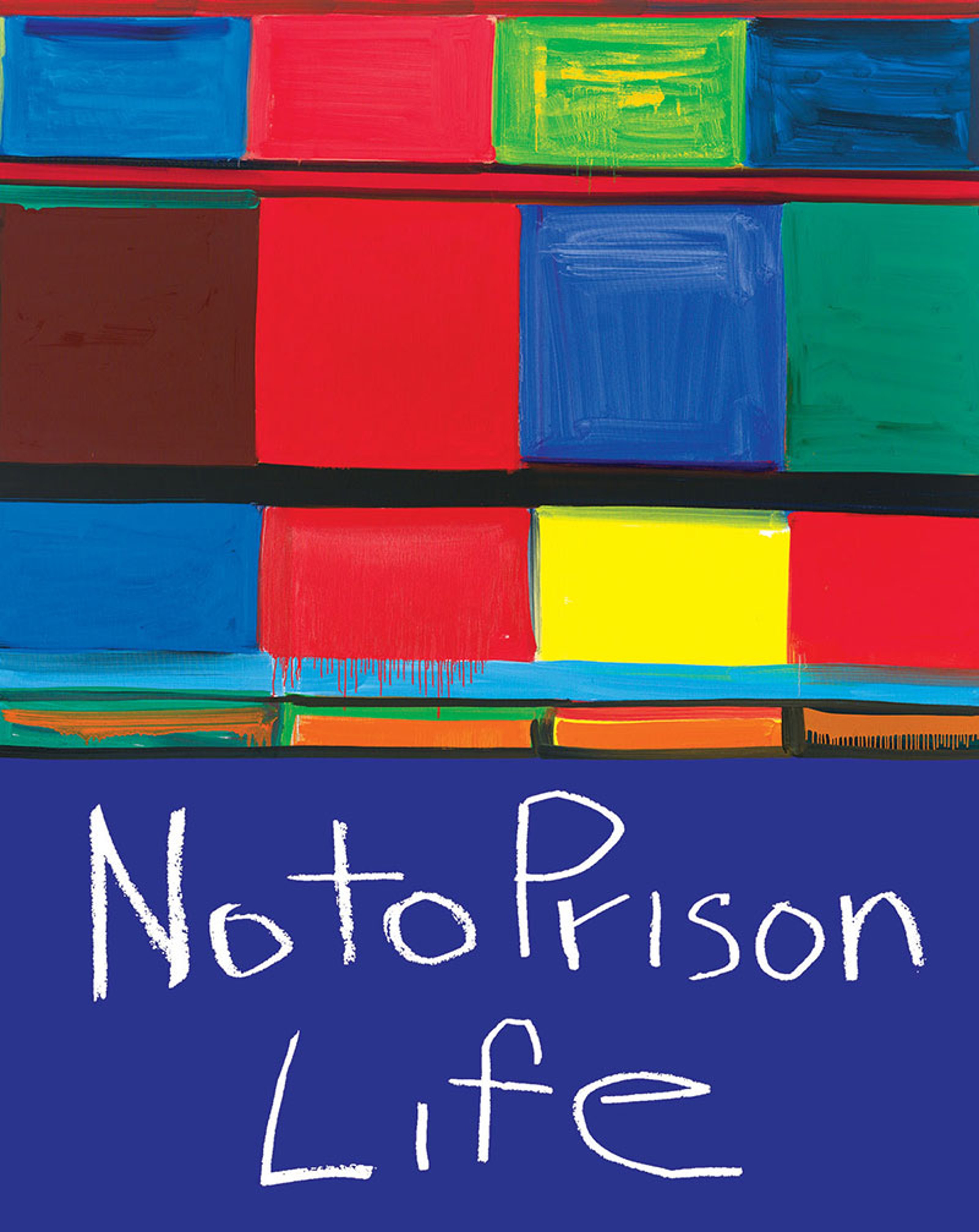
Stanley Whitney – No to Prison Life, 2019
**
What has been one of the most significant things you’ve noticed since joining MOCAD?**
The sense of community has really been refreshing at MOCAD and in Detroit.
As opposed to New York and other art capitals?
It feels like Detroit is a truly unique place. It has its own energy and texture. There’s a lot of civic pride and having an opportunity to learn and experience it all has been incredibly exciting and humbling.
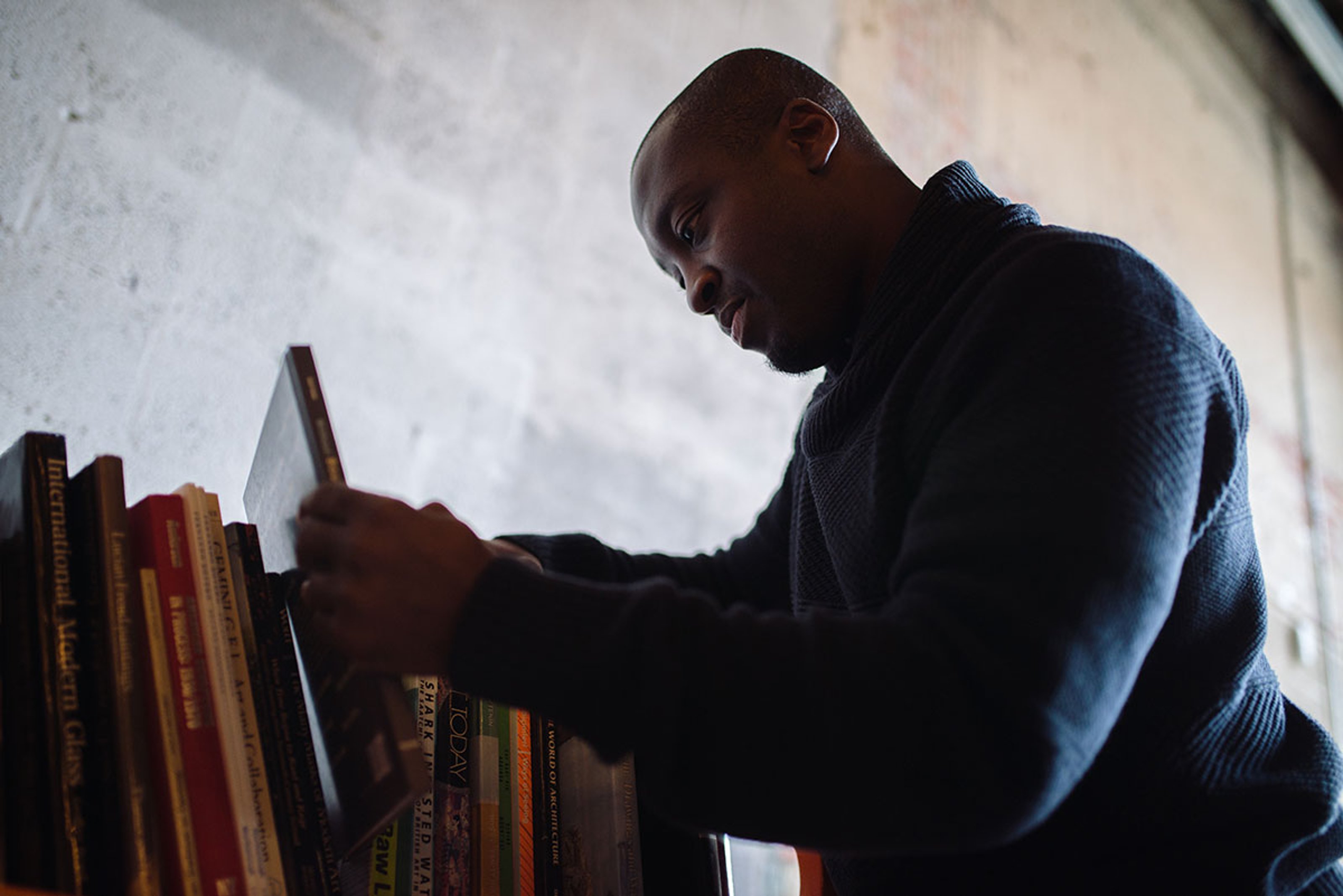
Do you think institutions should just celebrate artists or also serve as a platform for critique?
Definitely serve as a platform. In terms of MOCAD, we explore a diversity of artistic expressions like music, literature, visual arts, performance and cinema.
In terms of contemporary art museums, it is really about looking at the world of now, and the potential of what it could look like in the future. How do you look at the past and use that as a constructive teaching too as well?
It feels difficult to establish a position in the US, everything is so much about political correctness.
That’s the fluidity of culture, right? That’s something I realized this past summer when I curated a group show in Rome at Anna Marra Arte Contemporanea, with all artists of color. It was very interesting to do a show like that, particularly with this emergence of the conservative and reformist parties in Italy right now.
It was fascinating to talk to people about certain projects that in the US have been celebrated, but in Rome it was just like “Oh, that’s cool.” For me, it has opened up a larger question in terms of how do you really cut through, and reach the exhibition-goer regardless of cultural background, economic status. It’s a nice challenge.
So what does that teach us, this type of carefulness concerning geography?
You have to be aware and know how to adapt to your audience. In school, when you are doing public speaking, they say, “Know your audience.” You can’t do the same speech in London then in Shanghai. There’s a cultural nuance that comes with that, how do you shape an idea to take this cultural nuance into consideration without watering down the crux of the idea. That’s the challenge of a curator and artist.
So I don’t think it’s being careful, but aware and thoughtful. I was at the Berlin Biennale and I thought Gabi Ngcobo did an amazing job. It was her lens, her point of view and taking into consideration what’s happening in Germany right now. It resonated with the audiences, so whether you liked it or not, you felt something.
With anything I do, I want you to walk away and be moved. If you’re moved, I did my job.
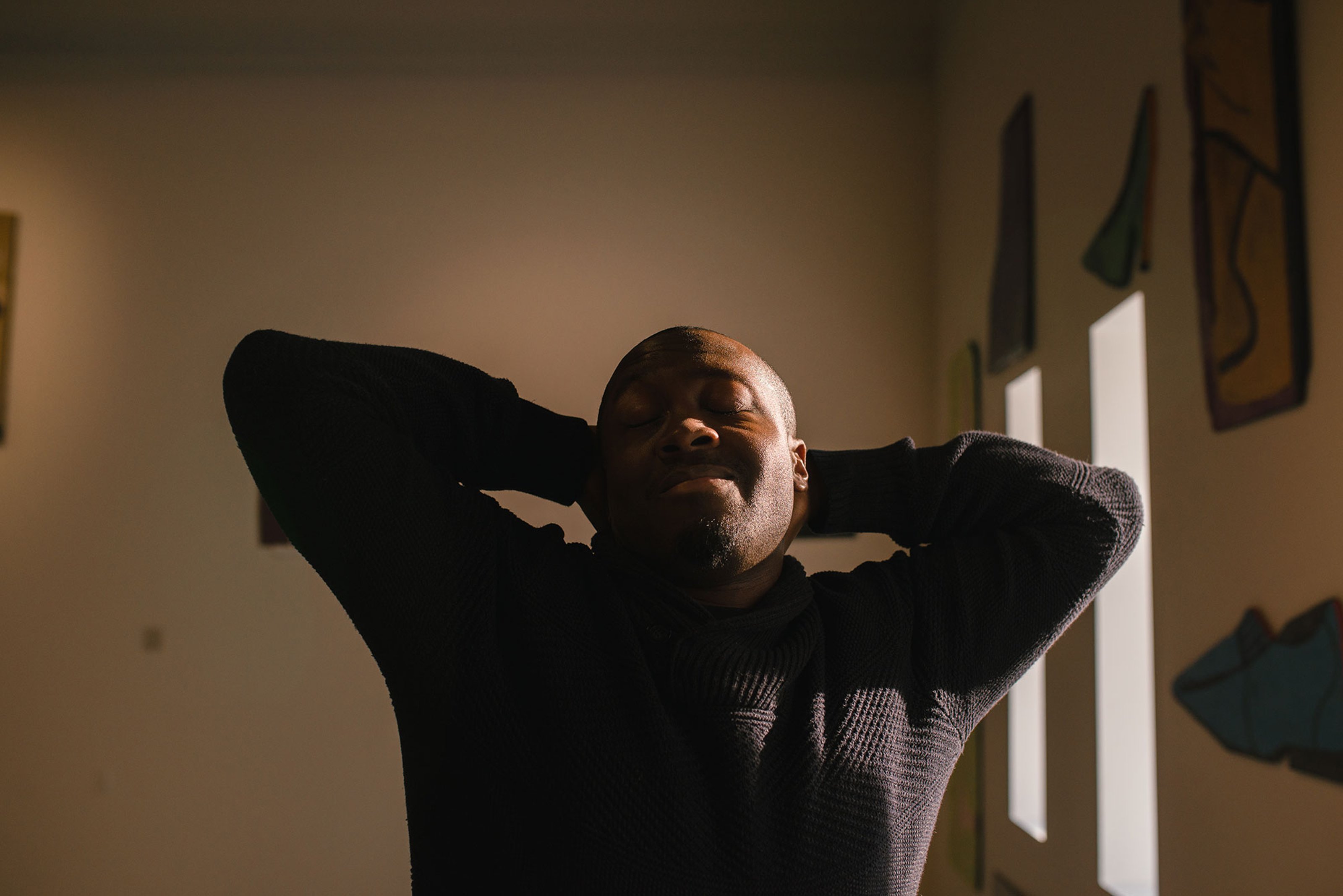
I have created a bit of a brain trust, because as you are ascending in your career and more attention is on you, it is imperative to have folks around you who will always provide constructive feedback
Have you ever felt limited in your role as a curator and arts advocate?
Most curators or artists will tell you that the only limit is budget (laughs). Depending what your budget is, you just need to get creative. I have done all types of shows, with little to big budgets. It all starts with the idea and the intent, who am I collaborating with, and how do I get the people to come see the shows. Coming from a business background, I’m always going to figure out an angle to make it work…
I think about Hans Ulrich Obrist and his first exhibitions in his apartment. It’s really about creating these spaces and platforms for dialogue, engagement and access.
You give advice to other people but where do you turn for guidance?
I’m blessed to have a lot of great people around me, from the art world and outside of it. Derrick Adams has been supportive since day one.
I have created a bit of a brain trust, which is super helpful because as you are ascending in your career and more attention is on you, it is imperative to have folks around you who will always provide constructive feedback.
I try to really apply design thinking in the way I learn about the world around me. I could be talking to someone who is a VC investor or someone who is an athlete or a scout, a dancer or plastic surgeon to hopefully gain a nugget of insight. How are these people making decisions and evaluating talent? How are they following their passion?

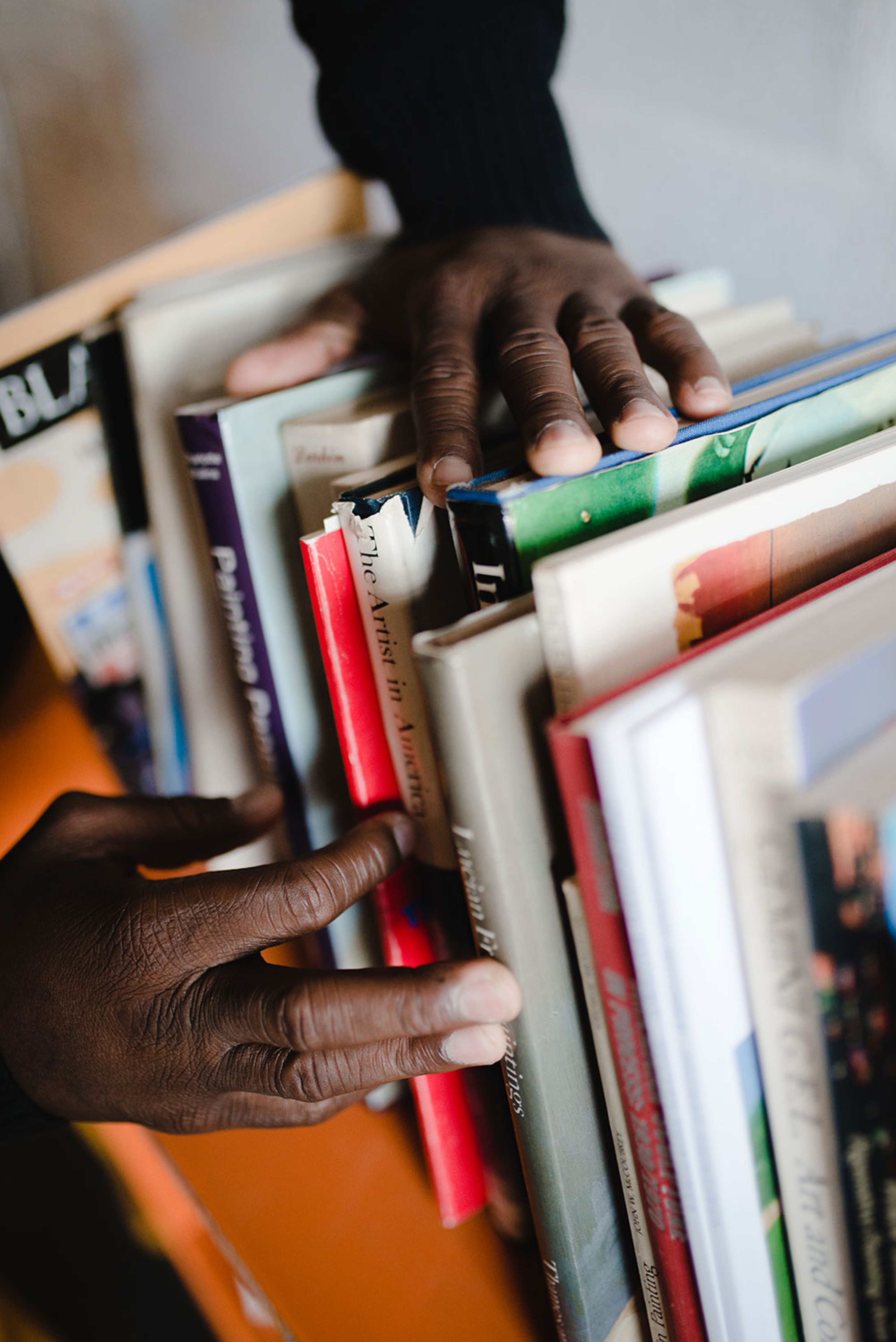
You have also mentored Collecteurs at the New Museum for the past year. What are your thoughts on its mission?
I think what Collecteurs is doing is truly necessary. When you take into consideration how much of the world’s incredible art is in storage or not available for the public to see, creating a platform—even if it’s not physically available but digitally for people to see and learn from—is really an energizing concept.
I think Collecteurs is on to something that will hopefully revolutionize our relationship with how we experience and think about art. But then more so shift how collectors think and how they build collections. There’s the intent to really serve a public good, because at the end of the day if you are blessed with an incredible piece of art that moves and inspires you, you are merely just a steward of that work.
Collecteurs allows individuals to be of better service in terms of their stewardship of these artworks and these collections. My hope is that particularly young, emerging collectors find inspiration, and know that this experience and joy can be something they participate in as well.
Is that why you decided to join MOCAD—to reach different goals that you were not able to reach individually?
It’s exciting to have a bigger platform, being able to reach more people. It’s just a natural progression. It’s one thing to be able to put on shows, and another thing to work in collaboration with some fantastic colleagues and collaborate to cultivate a program that has a comprehensive vision.
You get few opportunities in life to be a part of something right when it’s happening, like Detroit. It’s usually too early or too late.
Detroit is the definitely the right place for that…
And people are curious, which is very exciting.
End.
Text by Lara Konrad for Collecteurs
Photography: Stephen Koss for Collecteurs Magazine